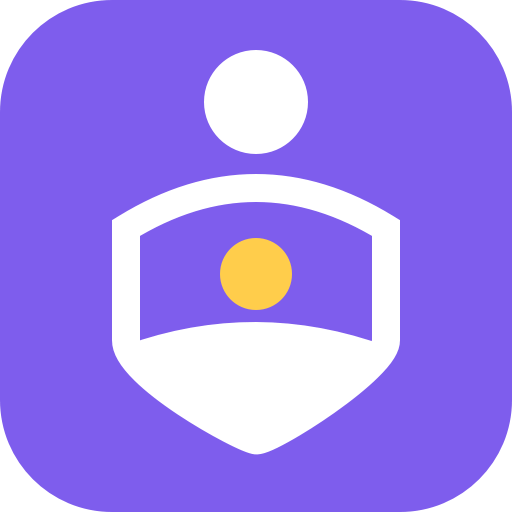guided access iphone 13
# A Comprehensive Guide to Guided Access on iPhone 13
The iPhone 13, like its predecessors, is a powerful device loaded with features that enhance productivity and usability. One of the standout functionalities that Apple has integrated into its iOS operating system is Guided Access. This feature is particularly beneficial for parents, educators, and individuals with disabilities, allowing users to lock their devices to a single app while restricting certain areas of the screen. In this article, we will explore Guided Access in detail, its setup process, benefits, tips for effective usage, and troubleshooting common issues.
## Understanding Guided Access
Guided Access is an accessibility feature designed to help users focus on a specific task by limiting their interaction with the iPhone to one app. When activated, it restricts the user from exiting that app or accessing other features of the device, making it an excellent tool for various scenarios. Whether you’re a parent wanting to ensure your child stays within a learning app, a teacher conducting a classroom activity, or an individual with attention difficulties, Guided Access can prove invaluable.
This feature allows you to disable hardware buttons, restrict touch input on certain areas of the screen, and set time limits for app usage. This level of control not only fosters concentration but also enhances the overall experience of using the device for specific tasks.
## Setting Up Guided Access on iPhone 13
### Step 1: Enabling Guided Access
To start using Guided Access on your iPhone 13, you first need to enable it within the device settings. Here’s how to do it:
1. **Open Settings**: Tap on the Settings app on your home screen.
2. **Navigate to Accessibility**: Scroll down and select ‘Accessibility.’
3. **Locate Guided Access**: Under the ‘General’ section, find and tap on ‘Guided Access.’
4. **Toggle On**: Switch the Guided Access toggle to ‘On.’
5. **Set Passcode**: Tap on ‘Passcode Settings’ to set a passcode that will be used to exit Guided Access mode. You can also enable Face ID or Touch ID if you prefer.
6. **Additional Options**: There are additional options available, like enabling ‘Time Limits’ and ‘Accessibility Shortcut’ which can be useful for quick access.
### Step 2: Using Guided Access
Once you’ve enabled Guided Access, using it is straightforward:
1. **Open the Desired App**: Launch the app you want to lock your device into.
2. **Activate Guided Access**: Triple-click the side button (or the home button on older devices) to activate Guided Access.
3. **Customize Settings**: Before starting, you can circle areas of the screen you want to disable, such as buttons or parts of the screen that may tempt the user to exit the app.
4. **Start Guided Access**: Tap on ‘Start’ in the upper right corner to begin the session.
### Step 3: Ending a Guided Access Session
Ending a Guided Access session is just as simple:
1. **Triple-click the Side Button**: While in the app, triple-click the side button again.
2. **Enter Passcode**: Enter the passcode you set earlier (or use Face ID/Touch ID).
3. **Tap End**: In the upper left corner, tap on ‘End’ to exit Guided Access.
## Benefits of Guided Access
Guided Access comes with a plethora of benefits that make it a unique feature for iPhone users. Some key advantages include:
### Enhanced Focus
In our fast-paced world filled with distractions, Guided Access allows users to concentrate on a single task without the temptation of switching apps or getting sidetracked by notifications. This focus can be particularly beneficial for students studying or individuals working on specific projects.
### Parental Control
For parents, Guided Access offers peace of mind when allowing their children to use the device. By locking their child into educational apps or games, parents can ensure that their kids are engaged and learning rather than wandering off into other apps or content that may not be appropriate.
### Educational Tool
In educational settings, teachers can use Guided Access to create a controlled environment for students. Locking devices to specific educational applications during tests or lessons can prevent cheating and ensure that students remain on task.
### Accessibility for Individuals with Disabilities
Guided Access is also a crucial tool for individuals with disabilities. It can help those with cognitive challenges to focus on one task at a time, making technology more accessible. It provides an environment tailored to their needs, which can significantly enhance their interaction with technology.
### Customization Options
The ability to customize which parts of the screen are interactive allows for tailored experiences. For instance, if a certain button could lead to distractions, it can be disabled, ensuring that the user can engage with the app without interruptions.
## Tips for Effective Usage of Guided Access
To make the most out of Guided Access, consider the following tips:
### Plan Your Sessions
Before engaging Guided Access, plan the duration and purpose of the session. Knowing how long you need to focus on a task will help you manage your time effectively, especially when using the time limit feature.
### Use the Accessibility Shortcut
If you frequently use Guided Access, consider setting it up as an accessibility shortcut. This allows you to activate it quickly by triple-clicking the side button, saving you time when you need to lock into an app quickly.
### Experiment with Disabling Areas
Take some time to experiment with the feature that allows you to disable certain areas of the screen. This can be particularly useful in scenarios where you want to prevent access to specific buttons or functions within an app.
### Communicate with Users
If you are using Guided Access in a teaching or caregiving situation, communicate the purpose and importance of the feature to the user. Understanding why they are locked into an app can help reduce frustration and enhance cooperation.
### Regularly Update Your Device
Keep your iPhone 13 updated to the latest iOS version. Apple frequently introduces new features and improvements, and staying updated ensures that you have the best performance and security for your device.
## Troubleshooting Common Issues
While Guided Access is a robust feature, users may encounter some challenges. Here are common issues and their solutions:
### Issue: Unable to Exit Guided Access
If you find yourself unable to exit Guided Access, first ensure that you are entering the correct passcode. If Face ID or Touch ID is enabled, ensure that it is functioning correctly. If all else fails, try restarting your iPhone.
### Issue: Touch Areas Not Responding
Sometimes, the areas you wish to disable may not respond as expected. Make sure you have properly circled the areas when starting Guided Access. If the issue persists, try recalibrating the touch by restarting the app or the device.
### Issue: Guided Access Does Not Start
If Guided Access doesn’t activate when you triple-click the side button, ensure that it is enabled in your settings. If it is, try restarting your device or checking if any accessibility features may be conflicting with it.
### Issue: Time Limit Notifications
If you’ve set a time limit and are receiving notifications, make sure to communicate this to users beforehand. If the notifications are disruptive, consider disabling the time limit feature for that session.
### Issue: Performance Issues
If using Guided Access seems to slow down your device, ensure that your iPhone 13 is updated to the latest iOS version. Sometimes, performance issues can arise from outdated software or apps.
## Conclusion
Guided Access is a powerful feature on the iPhone 13 that offers users an opportunity to enhance focus, ensure safety, and create tailored experiences on their devices. Whether you are a parent, educator, or someone looking to minimize distractions, the ability to lock your iPhone into a single app can be a game-changer.
By understanding how to set up and use Guided Access effectively, you can take full advantage of its benefits. With the right strategies and knowledge, Guided Access can significantly improve your productivity and help those around you, making technology more accessible and enjoyable for everyone.
As we continue to navigate a world filled with distractions, leveraging features like Guided Access can help us regain control over our devices, allowing us to focus on what truly matters. So, whether it’s for educational purposes, parental control, or personal focus, Guided Access on the iPhone 13 stands out as a feature worth exploring.
whatsapp archive messages
With the increasing popularity of instant messaging apps, such as WhatsApp , people have been relying on them more and more to communicate with their friends, family, and colleagues. These apps offer a convenient and quick way to stay in touch with others, but they also accumulate a vast amount of messages over time. While it may be fun to scroll through old conversations, it can become overwhelming and even challenging to find specific messages. This is where the feature of archiving WhatsApp messages comes in.
In this article, we will explore the concept of archiving WhatsApp messages, its benefits, and how to archive and manage your messages effectively.
What are Archived Messages in WhatsApp?
Archived messages in WhatsApp are those that have been hidden from your main chat screen. They are not deleted but stored in a separate folder, making it easier to manage your conversations. When you archive a message, it will no longer appear in your chat list, but you can still access it anytime you want.
Why Should You Archive Your WhatsApp Messages?
1. Declutter Your Chat List



One of the most significant advantages of archiving WhatsApp messages is that it helps declutter your chat list. With the constant influx of new messages, it can become challenging to keep track of important conversations. Archiving messages allows you to prioritize your chats and keep your main chat screen organized.
2. Protect Your Privacy
Archiving messages can also help protect your privacy, especially if you share your phone with others. By hiding your chats, you can prevent others from reading your messages, ensuring your privacy is maintained.
3. Save Storage Space
WhatsApp messages, especially those with media such as photos, videos, and documents, can take up a lot of storage space on your device. By archiving messages, you can save storage space and keep your phone running smoothly.
4. Easy Retrieval of Important Conversations
We all have that one important conversation that we need to refer to from time to time. With archiving, you can easily retrieve these conversations without scrolling through your entire chat list. It is a handy feature for those who use WhatsApp for work or have important information shared through the app.
How to Archive WhatsApp Messages?
Now that you know the benefits of archiving WhatsApp messages, let’s look at how you can archive your chats.
1. Individual Chat
To archive an individual chat, swipe left on the chat you want to archive, and tap on the “Archive” option. The chat will now be moved to the archived folder.
2. Group Chat
To archive a group chat, tap and hold on the chat, and then tap on the “Archive” icon at the top of your screen.
3. Archive All Chats
If you want to archive all your chats at once, go to the main chat screen and tap on the three dots at the top right corner. Then, select “Archive all chats.”
How to Access Archived Messages?
To access your archived messages, go to the main chat screen, and scroll all the way to the top. Here, you will see the “Archived chats” option. Tap on it, and you will see all your archived conversations.
How to Unarchive WhatsApp Messages?
If you want to bring back an archived chat to your main chat list, here is how you can do it:
1. Individual Chat
To unarchive an individual chat, scroll down to the bottom of your main chat screen, where you will see the “Archived chats” option. Swipe left on the chat you want to unarchive and tap on the “Unarchive” option.
2. Group Chat
To unarchive a group chat, go to the “Archived chats” section and tap and hold on the chat you want to unarchive. Then, tap on the “Unarchive” icon at the top of your screen.
How to Manage Your Archived Messages?
Now that you know how to archive and unarchive your chats, let’s look at some tips to effectively manage your archived messages.
1. Use Labels
WhatsApp allows you to label your archived chats to make it easier to find them later. To do this, go to the “Archived chats” section and tap on the chat you want to label. Then, tap on the three dots at the top right corner and select “Change label.” You can choose from the existing labels or create a new one.
2. Pin Important Chats
If you have an important chat that you refer to frequently, you can pin it to the top of your archived chats. To do this, tap and hold on the chat you want to pin, and then tap on the “Pin” icon at the top of your screen. The chat will now appear at the top of your archived chats.
3. Delete Unnecessary Chats
While archiving messages can help declutter your chat list, it is essential to delete unnecessary chats from time to time to save storage space. To delete a chat, go to the “Archived chats” section and tap and hold on the chat you want to delete. Then, tap on the “Delete” icon at the top of your screen.
4. Archive Old Chats Automatically
If you have a habit of archiving old chats, WhatsApp allows you to do it automatically. To enable this feature, go to “Settings,” then “Chats,” and then “Archive all chats.” You can choose to archive all chats older than a day, a week, a month, or a year.
Conclusion



Archiving WhatsApp messages is a useful feature that can help you manage your conversations and declutter your chat list. It also offers privacy and storage benefits, making it an essential tool for any WhatsApp user. By following the tips mentioned above, you can effectively manage your archived messages and access them whenever needed. So, go ahead and start archiving your chats to enjoy a clutter-free chat list and a smoother messaging experience on WhatsApp.
